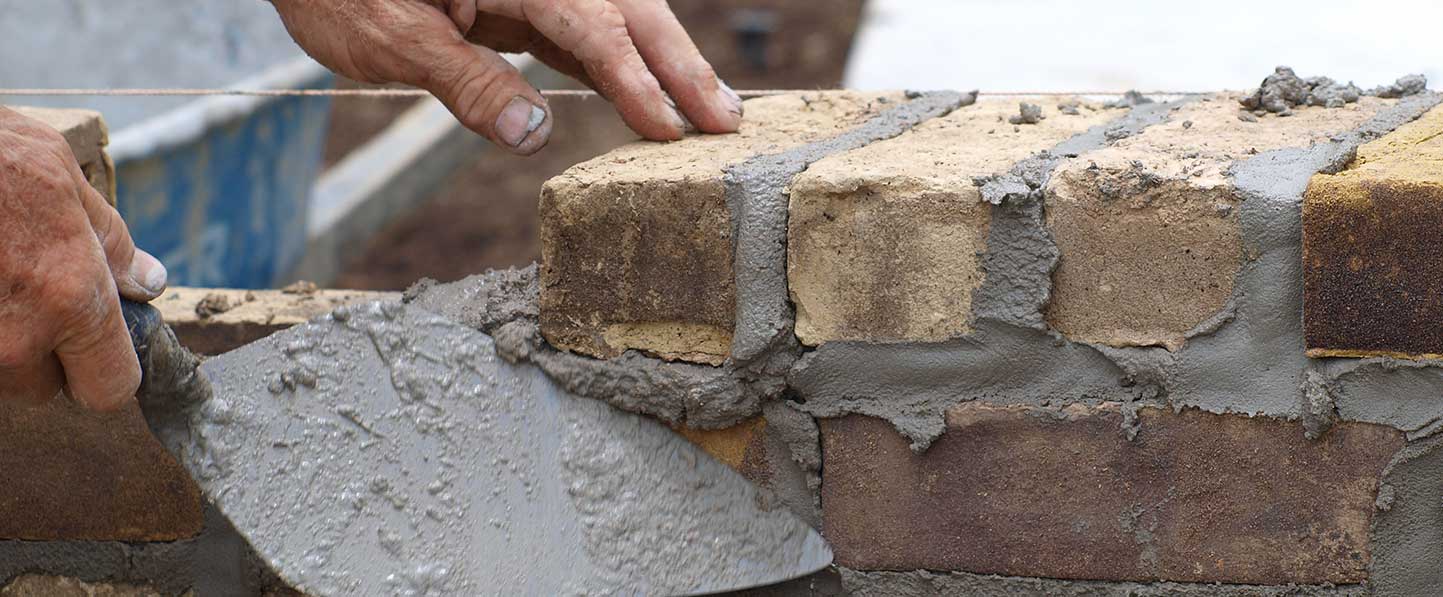Opening the Keys of Sustainable Stonework Construction Practices for Eco-Friendly Buildings
In the realm of modern construction, the pursuit of sustainable practices has become paramount. Among the myriad approaches to environment-friendly building, sustainable masonry construction stands out as a reliable and durable approach that holds a wide range of untapped capacity. From the option of materials to innovative building and construction strategies, the secrets to achieving sustainability within stonework building and construction are diverse and interesting. By checking out the benefits, products, methods, and future trends of lasting stonework, a much deeper understanding of just how these practices can form the future of green buildings arises.
Advantages of Lasting Stonework Building And Construction
Welcoming lasting masonry building and construction techniques not just minimizes environmental effect however also provides long-term economic benefits to contractors and neighborhoods. By using materials like recycled blocks, obstructs, and rocks, building contractors can dramatically reduce the carbon footprint of their projects while promoting source effectiveness. Furthermore, sustainable stonework building and construction techniques, such as appropriate insulation and thermal mass buildings, can boost power efficiency within structures, leading to lowered operational expenses gradually.
Furthermore, the sturdiness and resilience of stonework structures add to lasting economic advantages. Buildings created utilizing sustainable stonework practices commonly need much less repair and maintenance, translating to set you back savings for builders and home proprietors. The longevity of stonework materials likewise ensures that frameworks stay secure and protected, lowering the requirement for constant renovations or substitutes.
Eco-Friendly Masonry Materials
Making use of environment-friendly masonry materials is a pivotal step in the direction of enhancing the sustainability of building techniques and lessening ecological impact while maximizing long-term economic advantages. Sustainable stonework products are sourced, produced, and utilized in a way that minimizes total ecological impact. Materials such as recycled bricks, recovered rock, and sustainable cinder block are becoming progressively prominent selections for eco-conscious builders. Recycled bricks, as an example, not just draw away waste from garbage dumps however additionally call for much less power to create compared to new bricks. Reclaimed stone provides a special aesthetic charm while minimizing the demand for brand-new quarrying. Sustainable concrete blocks integrate recycled aggregates and may feature better insulation properties, adding to power effectiveness in buildings.
In addition, all-natural products like adobe, rammed planet, and straw bundles give exceptional thermal mass buildings, lowering the requirement for home heating and cooling energy. These products are typically in your area available, advertising local economic situations and decreasing transportation-related carbon exhausts. By selecting green masonry materials, building and construction projects can substantially reduce their ecological impact and contribute to the production of much healthier, a lot more lasting built environments.
Energy-Efficient Stonework Techniques
Energy effectiveness plays an essential function in boosting the sustainability of stonework building and construction techniques. By implementing energy-efficient masonry methods, building contractors can significantly decrease the general power consumption of a building, resulting in lower functional expenses and a smaller sized ecological impact. One vital energy-efficient masonry technique is making use of thermal mass, which includes integrating dense materials like concrete or brick into the building's framework to absorb and store warmth. This helps regulate indoor temperatures, minimizing the demand for mechanical home heating and cooling down systems.

Innovations in Sustainable Stonework
Current advancements in sustainable masonry methods have actually brought about ingenious methods that are improving the construction industry. One such development is the advancement of self-healing concrete, which makes use of bacteria embedded within the concrete to heal fractures autonomously. This advancement not only decreases maintenance costs however likewise improves the longevity of masonry frameworks, contributing to their sustainability.
Another notable development is using recycled aggregates in masonry construction - masonry contractor. By incorporating materials such as smashed ceramic waste or recycled glass right into concrete mixes, building contractors can reduce the environmental impact of building and construction tasks while keeping architectural honesty. This method not only draws away waste from land fills yet likewise saves natural deposits, making it a vital advancement in lasting stonework building
Additionally, the integration of digital layout tools, such as Structure Info Modeling (BIM), is transforming the way stonework structures are planned and created. BIM enables for more specific computations, reduced product wastage, and boosted energy performance, inevitably resulting in even more sustainable structure methods. These technologies collectively indicate a promising future for lasting masonry building in the era of eco-friendly buildings.
Future Trends in Stonework Sustainability
With the innovative strides made in sustainable stonework practices, the future patterns in stonework sustainability are poised to additional reinvent the construction market. Among the essential patterns forming the future of masonry sustainability is the enhanced assimilation of technology. Innovations such as Building Information Modeling (BIM) and online fact simulations are being utilized to maximize masonry building procedures, leading to minimized product waste and improved power performance in buildings.
Additionally, the advancement of unique lasting products is set to play a considerable function in boosting the eco-friendliness of stonework construction. masonry contractor. Technologies like self-healing concrete, recycled aggregates, and bio-based binders are gaining traction for their ability to minimize environmental effect while keeping architectural honesty

Final Thought
In verdict, lasting masonry building techniques supply countless advantages for environment-friendly structures. masonry contractor. Developments in sustainable masonry are continuously being created to better boost the environmental performance of structures.
Comments on “Specialist Step Repair Services: Ensure Safety and Toughness”